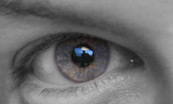She, of course, didn’t come to announce this. I had to pry it out of her. Something that was a near impossibility when this all started around the age of 17, but has become much easier now that she is 22.
At first, she asked whether she could possibly smoke some weed in the house. She doesn’t need my permission to smoke - in fact, it was I, who once talked her into starting to utilize marijuana for therapeutic purposes. She was 19 and I had to leave the country for a few weeks, leaving her home alone. At that time, I had just been informed by her therapist that she had gone from scratching to cutting herself. This news cloaked me like a scarf thrown onto a cat, rendering me nearly unable to move or spring into any useful action. How does one keep constant track of the whereabouts of every sharp object in the house? It’s impossible. And yet, I tried. Hiding scissors, micro-needling rollers, razor blades. Pointless measures to create an illusion of control for myself.
I was going to approve the in-the-house pot smoking, because when she went outside for this the last time, she got chased down by a crazy man, "wide-eyed and screaming", as she told the story, although that description could have probably applied to her as well. New York City was never a safe haven, but these post-pandemic streets are just a whole other level of unpredictable.
“You haven’t smoked in two weeks, right? Why now? In the middle of the week, when you have to be up early,” I asked.
She hesitated to tell me, which is where the prying came into play. It was to find yet another way of dealing with the thoughts of wanting to harm herself.
Lee has, for a while now, been struggling with depression, anxiety, an eating disorder and a slew of other “fun” comorbidity symptoms which often accompany these mental health challenges.
After years of therapy, she is much better at applying coping strategies to not actually hurt herself. Self-harm, ironically, serves as a pain release of another sort. It’s all the struggle within, the racing thoughts, the anxiety, the feeling of being overwhelmed that seem to find an outlet with a physical injury, she explained.
“But how would I even pull this off nowadays?” she wondered, considering the fact that she had developed a pretty debilitating fear of seeing blood or needles, often losing consciousness when in the presence of a phlebotomist at work. “I can’t cut myself .. I’ll pass out.”
“So when you’re fighting the urge, what do you do?” I asked
“I crochet, I call a friend, I do a crossword puzzle, just anything to distract myself,” she said.
“But those are just distractions, ... I think, maybe, you need to address the root of the impulse. ... Figure out how to find a healthy release for that urge”, I said, “and try to avoid idle time.”
Of course, the root of the problem is not the urge of self-harm itself. Ideally, she will, one day, find the reason for this impulse, but at that moment, as she looked at me with tears in her eyes, I felt like this would be a good place to start.
I suggested - partially joking - planking in the morning. There goes your pain right there.
Other ideas included joining a jiu jitsu gym or running her heart out on a treadmill, as she is convinced she’d get murdered if she were to run on the streets. #morepostpandemicfears
When I later spoke to my mother, who is an actual psycho-therapist (unlike me, the wanna-be-analyst) she pointed out that I cannot fix anything for her. She is already doing the work and the fact that she is employing coping strategies on her own is amazing progress. It is only time and continued patience as she goes through the motions that will create change.

